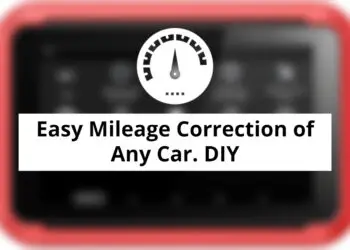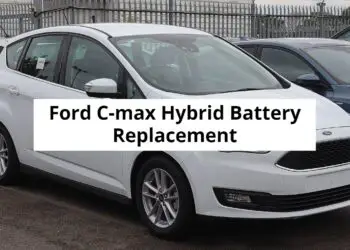Winter weather conditions are common during the last months and the first months of a year (let’s say November to April, or whenever). Wintertime electrical problems in an EV can occur during this period, and it’s a normal thing for sure. Some people ask that, can cold weather cause electrical problems in an EV?
Common Wintertime Electric Vehicle Problems
- Car is not accelerating properly
- Charging speed is too low
- The snowflake icon indicator on/blinking
- Tires lose air pressure
- Regenerative braking system not functioning as usual
Actually, there is no any kind of critical electrical problems that have occurred during the wintertime. What happens is, there may be a reduction of efficiency in the EV driving range, for sure. Because of the temperature matters for battery-based mechanisms.
So we can call it efficiency problems in an EV. Wintertime has always been a problem for any type of vehicle. No matter if you drive a petrol/diesel car or whatever. So why you just worry about your innocent, Eco-friendly Electric Car? Here we have the solutions for a better driving experience during the winter.
Best Tips for Maximizing Efficiency of your EV in Winter
Keep Your Car Plugged in
Since the cold temperature conditions make the battery charging at a lower speed, it’s a best practice to plug your car as much as you can. There will be no negative impact of keeping the charger plugged in, but it will ensure your EV is getting charged even it gets a longer time. Therefore you can arrange your daily routine without hassle.
Usually, all of us are not driving our electric car all day. At least your EV will be in your park/home garage for 8 – 12 hours. (Assuming you are not an uber or whatever driver, or you don’t use an electric car for 24/7 driving :D). So it’s a possible thing to do at all. Keep your EV Plugged in!
Allow your EV to Precondition

A precondition in EVs means to make the car to the optimal driving condition with the temperature. You can set and schedule your car’s precondition settings to warm the battery and the cabin (oppositely cool the cabin and the battery is also possible in most of the electric vehicles). But you should keep in mind that the preconditioning process may drain your battery faster. As we mentioned above, keeping your car plugged in is always great. Hence it will be done by the charger current and won’t drain your battery. At the time you depart, your battery is fully charged + you and your EV is warm as well. Sounds cool? Sounds hot;)
Check Tire Pressure Daily
At the start of writing this, I would highly recommend using winter tires for your vehicle as it offers a reliable and smooth driving experience.
Ok, back to the topic. As we all know, the temperature is a condition that affects directly by the pressure of your tires. Even you are using Nitrogen (N2) gas-filled tires. According to Wikipedia, 1 PSI (Pound-force per square inch) is reduced for each 10 Fahrenheit degrees decreasing. What happens after is increasing the road friction, resulting in more power consumption in the motor – fast battery drain. Therefore save a reminder in your smartphone or, write a note to check tire pressure and inflate if needed at each day you start driving. This could definitely help you to avoid unnecessary battery draining.
There is no problem if you inflate a few more PSI to your tires in the winter.
Example: Acceptable Winter Tire Pressure for Chevrolet Bolt is 39-41 PSI (Normal Recommended Tire Pressure is 36 PSI)
Here we brought you a PDF file regarding Recommended tire pressures for popular EVs:
Don’t use the Cabin Heater:
Cabin heaters are a kind of battery hunger module that can found in the vehicle. Of course, it’s made to make much comfortable your car’s inside in colder times. But you should keep in mind that cabin heaters can be lead to a cut off the possible driving range of your EV. Preferably you can use seat heaters and steering wheel heaters to reduce the cold. Since our primary purpose is to maximize the efficiency of your electric vehicle and drive as far as we can.
Bonus tip: Instead of using the window defroster all the driving time, you can turn on the defroster once and set it to its max. After the defrost process done, you can turn it off. For sure, it will be another good move of saving your battery.
Drive with Eco Mode:
Eco mode is a great option that almost all EVs have nowadays. It decreases the motor speed by providing relatively lower battery power than the Normal driving mode. This also helps to control the other vehicle modules to their best efficiency. Driving with Eco mode will be less enjoyable for you, but it will also make your driving more secure. Because driving in a snowy and slippery road always a kind of danger. Eco mode will lower the acceleration, and it will avoid spinning your wheels on the road.
Expose to Direct Sunlight in Daytime – Cover as much as in Night
Try to park your Electric car to exposing the direct sunlight (if there is no storm). It will give your vehicle a little warm. Even that is far better than none. Also, try to park your car in a closed-door garage or somewhere else in the night. Closed areas are always much warmer than the outside.
Takeaways:
You can solely improve the efficiency of your EV by doing the above steps, for sure. It can help to recover the 60%-70% of losing efficiency during the wintertime of your electric car. Just forget about a few uncomfortable moments. Remember that you are one of the very few members of the environmentally-friendly drivers’ chain. You must proud of yourself. As well as we do <3
You may like to watch:



